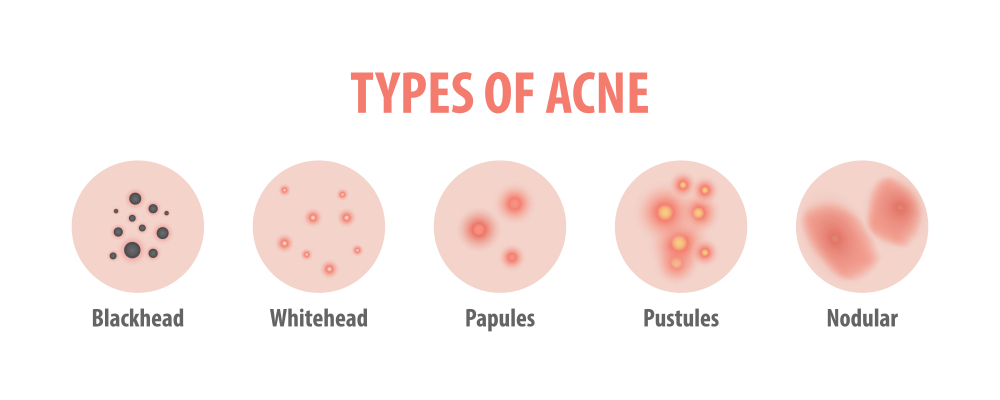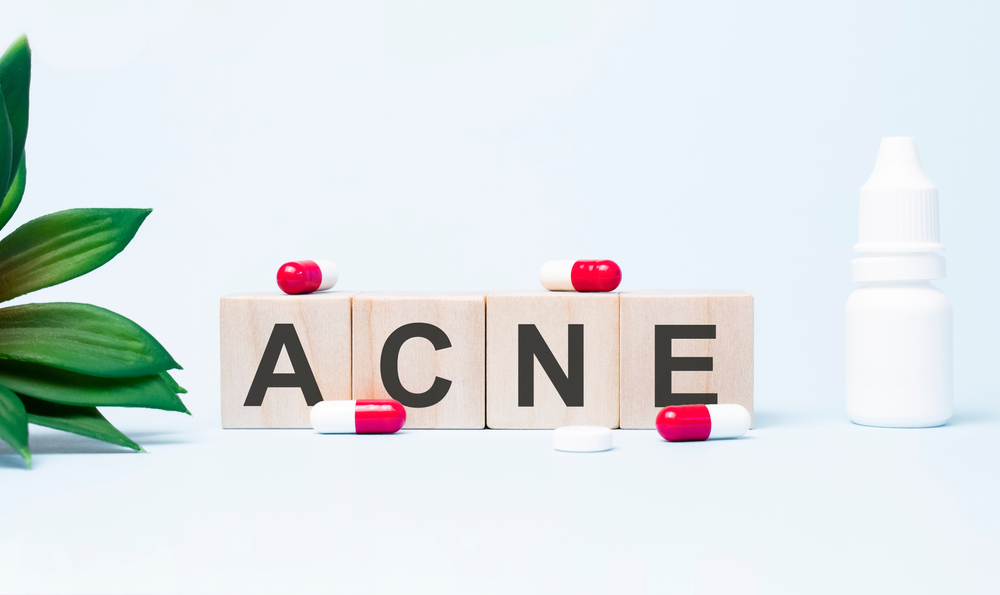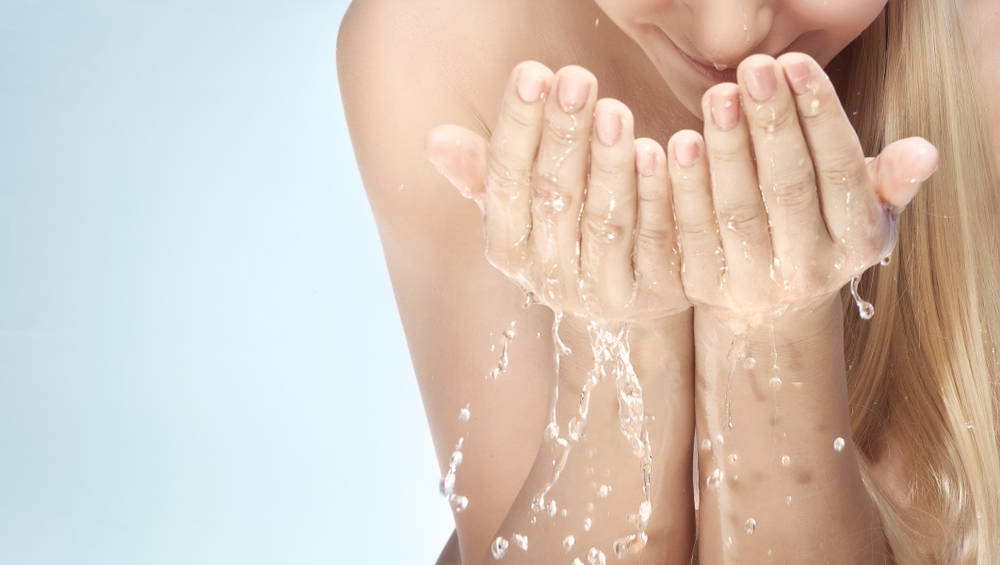Acne
Acne is a very common skin condition characterized by pimples on the face, forehead, chest, shoulders, and upper back. However, Genetics, fluctuating hormone levels, stress, high humidity, and the use of oily or greasy personal care products are all potential causes. Acne is most common in teenagers, but it can occur at any age.
What exactly is acne?
Acne is a common skin condition in which your skin’s pores become clogged with hair, sebum (an oily substance), bacteria, and dead skin cells. These obstructions result in blackheads, whiteheads, nodules, and other types of pimples. If you suffer from acne, know that you are not alone. It is the most common skin condition encountered by people. It is estimated that 80 percent of people between the ages of 11 and 30 will have at least a mild form of acne, and the majority of people will be affected by it at some point in their lives.
Acne affects whom?
Though it primarily affects teenagers and young adults going through hormonal changes, many people struggle with acne well into their 20s, 30s, and beyond. Some people experience acne for the first time as adults.
Where is acne most commonly found?
Acne is most commonly found on your face, forehead, chest, shoulders, and upper back. Oil glands can be found all over your body, but these are the ones with the most. The best way to treat acne is determined by its severity. It can be mild (a few pimples here and there), moderate (inflammatory papules), or severe (nodules and cysts).
What are the various types of acne?

Acne can manifest itself in a variety of ways. They are as follows:
–Blackheads: Open bumps on the skin that fill with dead skin and excess oil. The dark spots appear to be dirt deposited in the bump, but they are actually caused by an irregular light reflection off the clogged follicle.
–Whiteheads are bumps that are sealed shut by oil and dead skin.
–Papules: Inflammatory small red or pink bumps.
–Pustules: Pimples that contain pus. They have the appearance of whiteheads surrounded by red rings. I picked or scratched, they can leave scars.
–Fungal acne (pityrosporum folliculitis): This type develops when an overabundance of yeast grows in the hair follicles. They may become irritated and inflamed.
–Cysts: Pimples filled with pus. Scarring can result from these.
All of these types of acne can have a negative impact on your self-esteem. It is best to seek assistance from your healthcare provider as soon as possible so that they can assist you in determining the best treatment option(s) for you.
What is the root cause of acne?
Acne is primarily a hormonal condition caused by androgen hormones, which become active during the adolescent and young adult years. It can be caused by sensitivity to these hormones, in combination with surface bacteria on the skin and fatty acids within oil glands.
It can be caused by and/or exacerbated by the following factors:
Hormone levels fluctuate around the time of a woman’s period.
Acne sores are picked at.
Hats and sports helmets are examples of clothing and headgear.
Air pollution, as well as certain weather conditions, particularly high humidity.
Using oily or greasy personal care products (such as heavy lotions, creams, or hair pomades and waxes) or working in an environment where you are frequently exposed to grease (For example, working in a restaurant with greasy food surfaces and frying oil).
Acne flare-ups can be exacerbated by stress, which raises the hormone cortisol.
Some pharmaceuticals.
Genetics.
Do certain foods contribute to acne?
Acne is primarily caused by hormonal changes in the body. Although there is some evidence that skim milk, whey protein, and high-sugar diets may cause acne breakouts, this remains debatable.
Eating a well-balanced, nutritious diet rich in fresh fruits and vegetables, particularly those high in vitamin C and beta carotene, aids in the reduction of inflammation. There is also some evidence that eating fish may be beneficial.
Is it possible for acne to leave scars?
Scarring can occur as a result of acne. Acne causes this when it penetrates the skin and damages the deeper layers. Acne pores swell as a result of inflammation, and the pore wall breaks down. Scarring can, of course, cause anxiety, which is understandable. However, before it can be treated, your doctor will need to determine what type of acne caused the scars.
There are also several treatment options available. Acne scars can be treated with chemical peels, dermabrasion, laser resurfacing, micro-needling, and surgery.
Acne is diagnosed in what way?

During a skin exam, your healthcare provider can diagnose acne. They may also inquire as to whether you are under a lot of stress or if you have a family history of acne, both of which are risk factors. Teenage girls and women may also be asked about their menstrual cycles, as breakouts and menstrual cycles are sometimes linked. Acne outbreaks that are sudden and severe in older people can sometimes be a sign of something else.
How bad can acne get?
Dermatologists categorize acne based on its severity:
:-Grade 1 (mild): whiteheads and blackheads with a few papules and pustules.
:-Grade 2 (moderate or pustular acne): multiple papules and pustules on your face.
:-Grade 3 (moderately severe, or nodulocystic acne): numerous papules and pustules, with some inflamed nodules. Your back and chest may be affected as well.
:-Grade 4 (severe nodulocystic acne): many large, painful, and inflamed pustules and nodules.
Hormonal influences
It is caused by a variety of factors, but the main cause is thought to be an increase in androgen levels.
Androgen is a type of hormone whose levels rise as adolescence approaches. It is converted into estrogen in women.
Rising androgen levels stimulate the growth of oil glands beneath the skin. More sebum is produced by the enlarged gland. Excessive sebum can weaken cellular walls in the skin.
Rising androgen levels stimulate the growth of oil glands beneath the skin. More sebum is produced by the enlarged gland. Excess sebum can cause bacteria to grow by breaking down cellular walls in the pores.
Other potential triggers
According to some studies, genetic factors may increase the risk.
Other factors include:
some androgen and lithium-containing medications greasy cosmetics
hormonal shifts
Menstruation and emotional stress
Advice on prevention and management

Here are some tips for caring for acne-prone or acne-prone skin.
-Wash your face
Wash your face no more than twice a day with warm water and mild acne-specific soap.
-Do not scrub the skin or burst pimples
This may push the infection deeper into the skin, resulting in more blocking, swelling, and redness.
-Avoid popping pimples as this increases the likelihood of scarring.
A specialist can treat a pimple that needs to be removed as soon as possible for cosmetic reasons.
-Avoid touching your face.
When talking on the phone, keep the phone away from your face because it is likely to contain sebum and skin residue.
-Frequently wash your hands.
Especially before applying lotions, creams, or makeup.
-Clean your spectacles on a regular basis because they collect sebum and skin residue.
-If you have acne on your back, shoulders, or chest, try wearing loose clothing to allow the skin to breathe. Avoid wearing tight garments such as headbands, caps, and scarves, or wash them on a regular basis if you must.
-Select makeup for sensitive skin and stay away from oil-based products.
Before going to bed, take off your makeup.
-When shaving, use an electric shaver or sharp safety razors.
Before applying shaving cream, soften the skin and beard with warm soapy water.
-Keep your hair clean because it accumulates sebum and skin residue.
Hair products that are greasy, such as those containing cocoa butter, should be avoided.
-Avoid overexposure to the sun.
This can cause the skin to produce more sebum. Several acne medications increase your chances of getting sunburned.
-Avoid anxiety and stress
Because they can increase the production of cortisol and adrenaline, both of which aggravate acne.
-In hot and humid climates, try to stay cool and dry to avoid sweating.
Acne is a common skin condition. It can cause severe embarrassment, but treatment is available and, in many cases, effective.
Can acne be avoided?
Acne prevention during normal hormonal changes is difficult, if not impossible. However, there are some things that can help:
-Wash your face with warm water and a gentle facial cleanser on a daily basis.
-Utilize a moisturizer on a regular basis.
-You do not have to stop wearing makeup, but you should try to use “non-comedogenic” products and remove your makeup at the end of each day.
-Avoid touching your face with your hands.
What acne-related questions should I ask my doctor?
-Can you tell me what kind of acne I have?
-How bad is my acne?
-Do I require the services of a dermatologist?
-Do I require a referral?
-Can you recommend any over-the-counter medications?
-Can you recommend any prescription medications?
Medications for the skin

The following are the most commonly prescribed topical acne medications:
-Retinoids and retinoid-like medications
Retinoic acid or tretinoin-containing medications are frequently beneficial for moderate acne. These are available in creams, gels, and lotions. Tretinoin (Avita, Retin-A, and others), adapalene (Differin), and tazarotene are a few examples (Tazorac, Avage, others).
This medication is applied in the evening, three times a week at first, then daily as your skin becomes accustomed to it. It keeps hair follicles from becoming clogged. Tretinoin should not be used in conjunction with benzoyl peroxide.
Topical retinoids make your skin more sensitive to the sun. They can also cause dry skin and redness, particularly in people with darker skin. Adapalene may be the most well-tolerated medication.
-Antibiotics.
These kill excess skin bacteria while also reducing redness and inflammation. During the first few months of treatment, you may use both a retinoid and an antibiotic, with the antibiotic administered in the morning and the retinoid administered in the evening. Antibiotics are frequently combined with benzoyl peroxide to reduce the possibility of antibiotic resistance. Clindamycin with benzoyl peroxide (Benzaclin, Duac, and others) and erythromycin with benzoyl peroxide are two examples (Benzamycin). Topical antibiotics alone are not advised.
-Salicylic acid and azelaic acid.
Azelaic acid is an acid that occurs naturally and is produced by yeast. It is antibacterial in nature.
When used twice a day, a 20% azelaic acid cream or gel appears to be as effective as many conventional acne treatments. During pregnancy and while breastfeeding, prescription azelaic acid (Azelex, Finacea) is an option. It can also be used to treat discoloration caused by certain types of acne. Skin redness and minor skin irritation are possible side effects.
-Salicylic acid, which is available in both wash-off and leave-on formulations, may help prevent clogged hair follicles. There have been few studies that show its effectiveness. Also, skin discoloration and minor skin irritation are possible side effects.
-Dapsone.
Dapsone (Aczone) 5 percent gel, applied twice daily, is recommended for inflammatory acne, particularly in women. Redness and dryness are some of the side effects.
The evidence for using zinc, sulfur, nicotinamide, resorcinol, sulfacetamide sodium, or aluminum chloride as topical acne treatments are weak.
Therapies
The following therapies, either alone or in combination with medications, may be beneficial to some people.
-Light therapy.
It is a type of therapy that uses light to heal the body. A variety of light-based therapies have been tried with varying degrees of success. Most will necessitate several visits to your doctor’s office. However, more research is needed to determine the best method, light source, and dose.
-Peel chemical.
This procedure involves applying a chemical solution, such as salicylic acid, glycolic acid, or retinoic acid, repeatedly. This is a mild acne treatment. It may improve the appearance of the skin, but the effect is temporary, and repeat treatments are usually required.
-Extraction and drainage.
If topical medications haven’t cleared up whiteheads and blackheads (condos) or cysts, your doctor may use special tools to gently remove them. This technique improves the appearance of your skin temporarily, but it may result in scarring.
-Injection of steroids.
A steroid drug can be injected into nodular and cystic lesions to treat them. This therapy has resulted in significant improvement and pain reduction. Moreover, skin thinning and discoloration in the treated area are possible side effects.
10 skin-care habits that can help you get rid of acne

Are you treating your acne diligently but still experiencing new breakouts? It’s possible that your skincare routine is to blame. Here are ten skincare habits recommended by dermatologists to help you get the best results from your acne treatment:
- Wash your hands twice a day and after sweating. Perspiration, particularly when wearing a hat or helmet, can aggravate acne, so wash your skin as soon as you can after sweating.
- Apply a gentle, non-abrasive cleanser with your fingertips. Using a washcloth, mesh sponge, or anything else can cause skin irritation.
- Take care of your skin. Use gentle products, such as alcohol-free ones. Avoid using products that irritate your skin, such as astringents, toners, and exfoliants. Acne appears worse on dry, red skin.
- Scrubbing your skin can aggravate acne. Avoid the urge to scrub your skin.
- Rinse thoroughly with lukewarm water
- Shampoo on a regular basis. Also, shampoo your hair on a daily basis if you have oily hair.
- Allow your skin to heal on its own. If you pick, pop, or squeeze your acne, it will take longer to heal and you will be more likely to develop acne scars.
- Keep your hands away from your face. Throughout the day, touching your skin can cause flare-ups.
- Avoid the sun and tanning beds. Tanning harms your skin. Furthermore, some acne medications make the skin extremely sensitive to ultraviolet (UV) light, which is emitted by the sun and indoor tanning devices. Tanning beds raise your risk of melanoma, the deadliest form of skin cancer, by 75%.
- See a dermatologist if you have any of the following symptoms:
-The products you tried did not work.
-Your acne is leaving scars or darkening your skin.
Also Read: What Is Health Insurance? Why Is It Important? – V Cure (vcurehealthcare.com)








